For example, the magnitude of the positive effects of a drug on the study population Measures of effect size include absolute risk, relative risk, odds ratio and numbers needed to treat (NNT)Question 23 from the second paper of 08 asked the candidates to define effect size Effect size is a quantitative reflection of the magnitude of a phenomenon;In a control group The odds ratio (OR) is the odds of an event in an experimental group relative to that in a control group An RR or OR of 100 indicates that the risk is comparable in the two groups A value greater than 100 indicates increased risk;
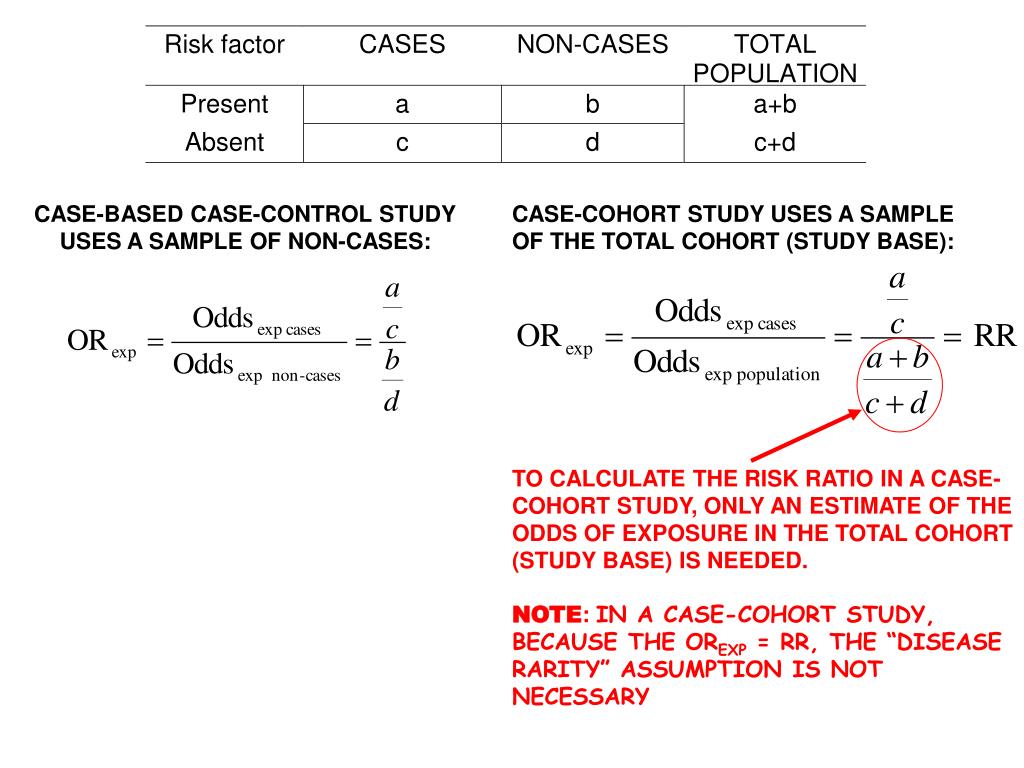
Ppt Measures Of Association Powerpoint Presentation Free Download Id
Odds ratio vs risk reduction
Odds ratio vs risk reduction-The risk ratio (or relative risk) is the ratio of the risk of an event in the two groups, whereas the odds ratio is the ratio of the odds of an event (see Box 92a) For both measures a value of 1 indicates that the estimated effects are the same for both interventionsJan 10, 13 · Odds ratio vs relative risk Odds ratios and relative risks are interpreted in much the same way and if and are much less than and then the odds ratio will be almost the same as the relative risk In some sense the relative risk is a more intuitive measure of effect size
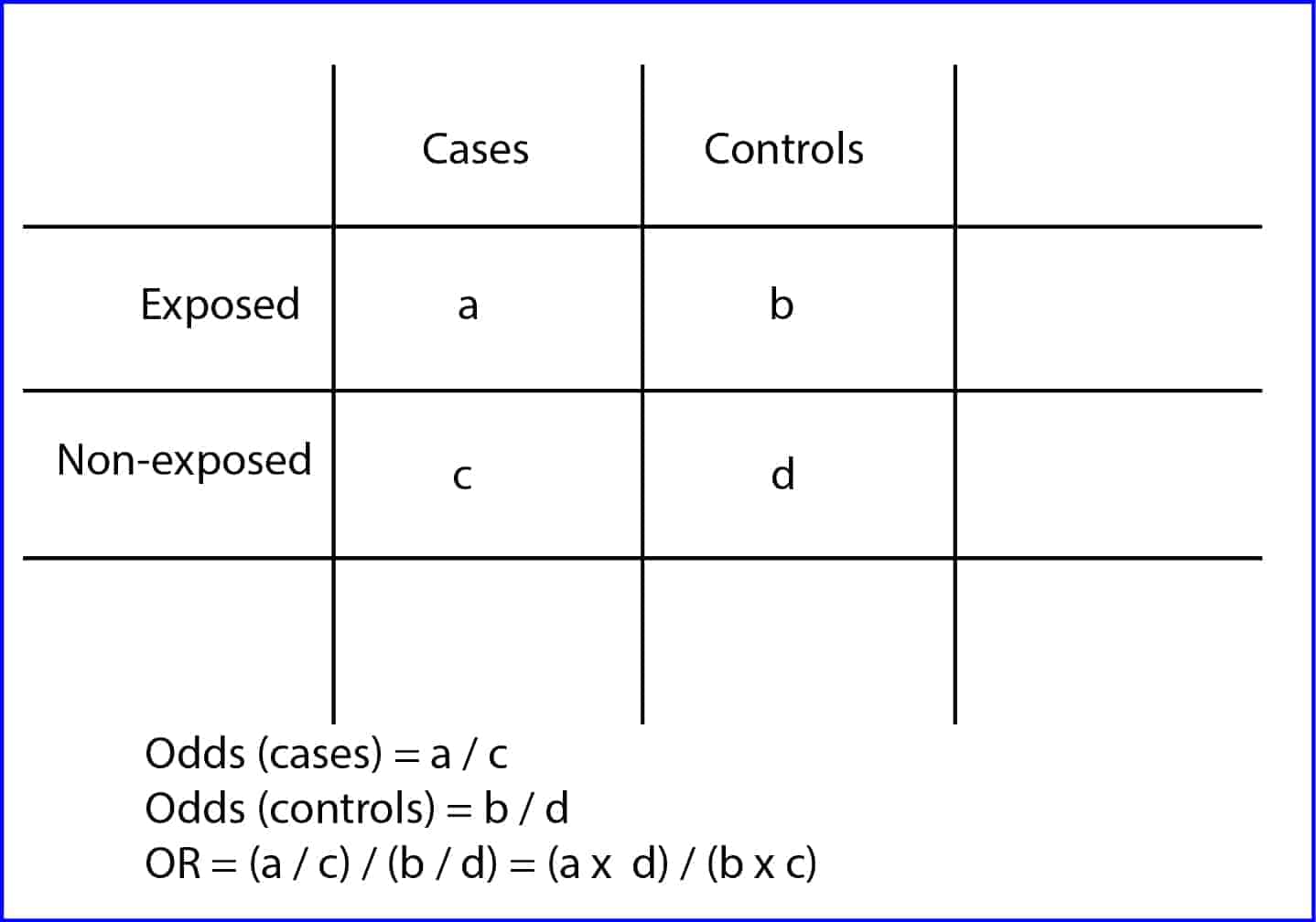


The One With The Foreign Name Science Without Sense Double Nonsense
The risk ratio, the incidence rate ratio, and the odds ratio are relative measures of effect Risk difference is an absolute measure of effect and it is calculated by subtracting the risk of the outcome in exposed individuals from that of unexposedAug 27, 15 · Odds Ratios vs Risk Ratios Posted on August 27, 15 September 25, 15 by StatsBySlough From the previous post , we understand that Odds Ratios (OR) and Risk Ratios (RR) can sometimes, but not always be interpreted in the same wayDec 08, 18 · Risk Ratio vs Odds Ratio Whereas RR can be interpreted in a straightforward way, OR can not A RR of 3 means the risk of an outcome is increased threefold A RR of 05 means the risk is cut in half
Both the odds ratio and the relative risk compare the relative likelihood of an event occurring between two groups The relative risk is easier to interpret and is consistent with general intuition Some designs, however, allow only for the calculation of the odds ration Covariate adjustment is easier for an odds ratioFeb 07, 14 · a) It was possible to estimate the population at risk b) It was not possible to derive an adjusted relative risk c) The odds ratio is an estimate of the population relative risk d) The odds ratio is a measureSep 02, · A risk or odds ratio = 1 indicates no difference between the groups A risk or odds ratio > 1 indicates a heightened probability of the outcome in the treatment group The two metrics track each other, but are not equal An example with a control group and a therapy treatment group
A value lower than 100 indicates decreased risk The 95% confidence intervals and statisticalAbout Press Copyright Contact us Creators Advertise Developers Terms Privacy Policy & Safety How YouTube works Test new features Press Copyright Contact us CreatorsThe ratio of the odds for female to the odds for male is (32/77)/(17/74) = (32*74)/(77*17) = 1809 So the odds for males are 17 to 74, the odds for females are 32 to 77, and the odds for female are about 81% higher than the odds for males Now we can relate the odds for males and females and the output from the logistic regression
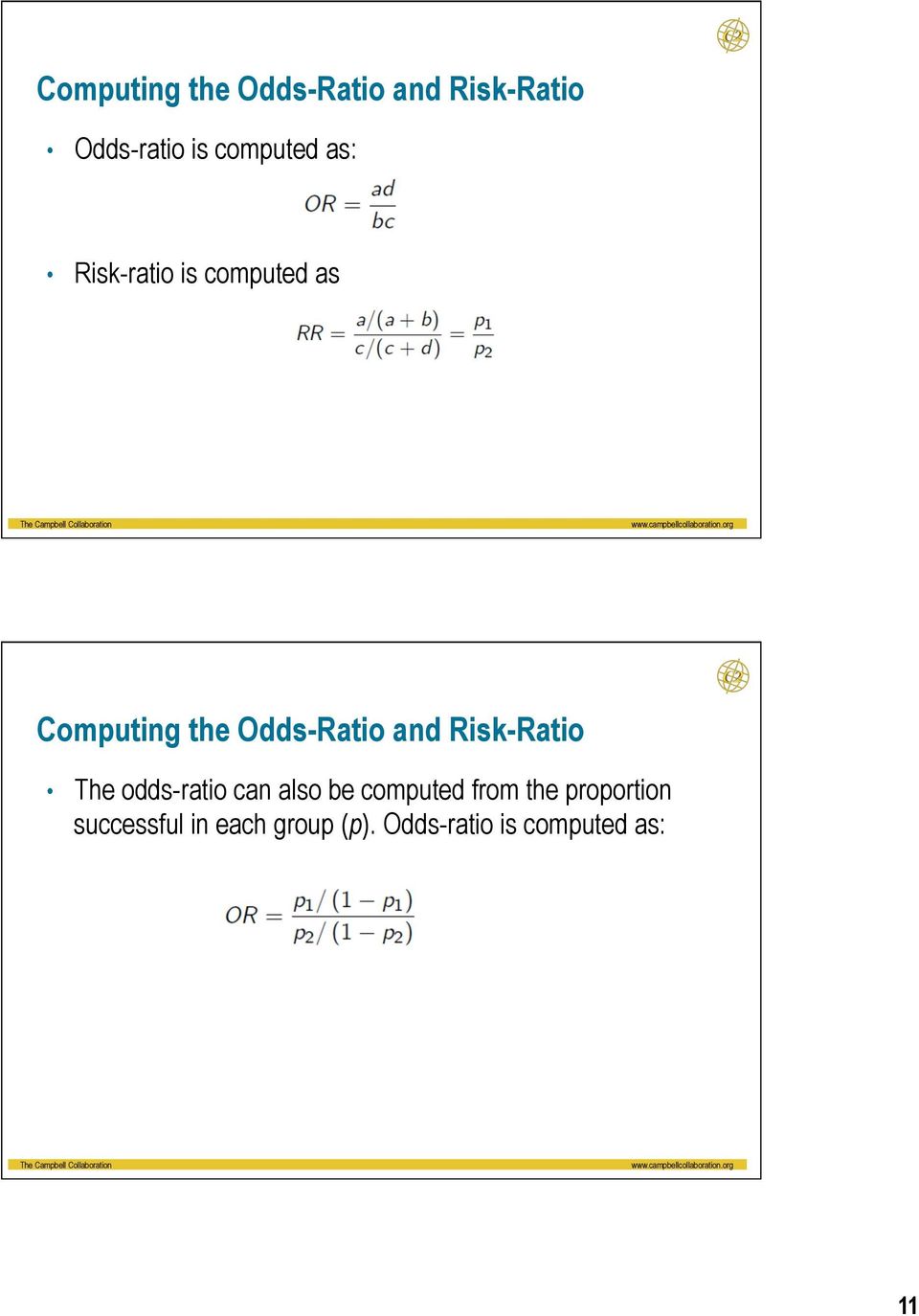


Calculating Effect Sizes Pdf Free Download
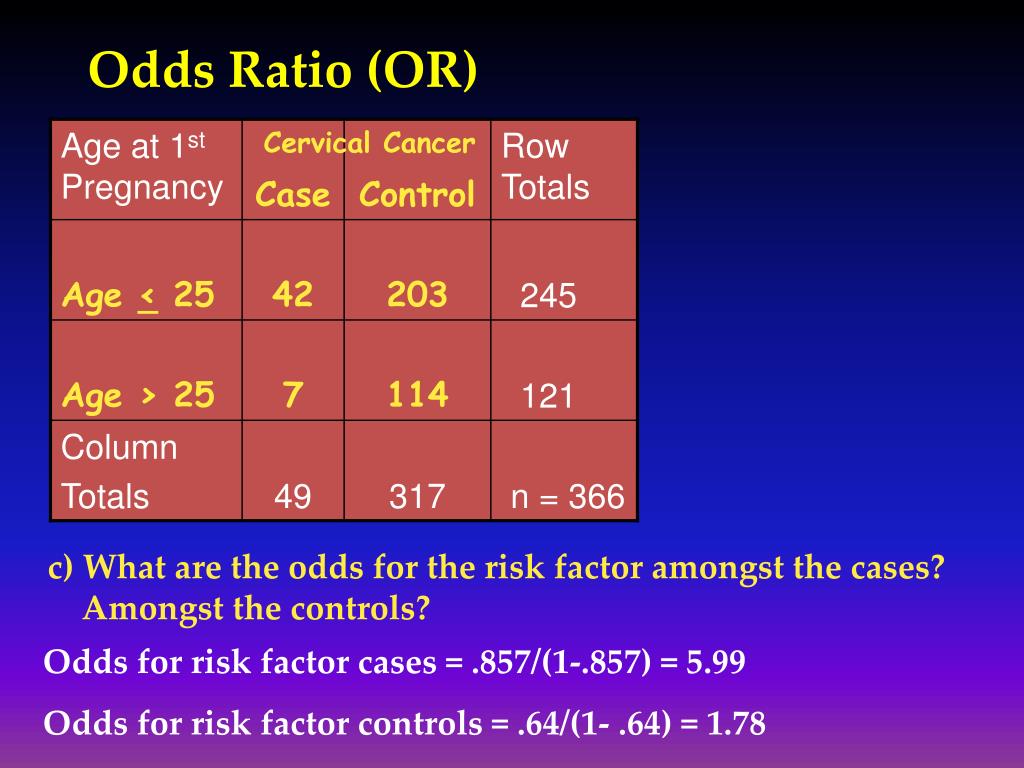


Ppt Epidemiological Measures Powerpoint Presentation Free Download Id
Odds Ratio It is defined as the ratio of the odds of an event occurring in one group to the odds of it occurring in another group or to a samplebased estimate of that ratio= A/ (1A)/ B/Risk ratios, odds ratios, and hazard ratios are three ubiquitous statistical measures in clinical research, yet are often misused or misunderstood in their interpretation of a study's results A 01 paper looking at the use of odds ratios in obstetrics and gynecology research reported 26% of studies (N = 151) misinterpreted odds ratios as risk ratios , while a 12 paper found similarOdds ratios (OR) are commonly reported in the medical literature as the measure of association between exposure and outcome However, it is relative risk that people more intuitively understand as a measure of association Relative risk can be directly determined in a cohort study by calculating a risk ratio (RR)



The One With The Foreign Name Science Without Sense Double Nonsense


Close Encounters Of The Third Kind Rare Genetic Variants In Families Beyond The Ion Channel
Page History People who can view Page Information Resolved comments View in Hierarchy3) The Odds Ratio 4) After calculating the odds ratio, we observe a 3fold difference in the prevalence rate (75% vs 25%) change to a 9fold difference in the odds ratio Clearly, the two methods produce opposing results Effect of Changing Incidence on OR Problem Let us consider the relationship between smoking and lung cancerWhen the disease is rare, the odds ratio will be a very good approximation of the relative risk The more common the disease, the larger is the gap between odds ratio and relative risk In our example above, p wine and p no_wine were 0009 and 0012 respectively, so the odds ratio was a good approximation of the relative risk



The One With The Foreign Name Science Without Sense Double Nonsense



Tutorial About Hazard Ratios Students 4 Best Evidence
Odds ratio is always larger than Relative Risk, sometimes a lot larger 2 Odds ratios are only useful in true case control studies, which are done because the true incidence of the disease isOct 27, 17 · Note that an odds ratio is a good estimate of the risk ratio when the outcome occurs relatively infrequently (Feb 03, 14 · Risk Ratio is often expressed as a factor and a whole positive number, such as " is times more likely" The difference between odds ratio and risk ratio While Risk Ratio is the probability of one thing divided by the probability of another (usually in a separated group), Odds Ratio is the odds of one event happening divided by the



How To Calculate Odds Ratio And Relative Risk In Excel Statology



Odds Ratio Of Death For Transfusion Compared To No Transfusion By Risk Category
The relative risk and the odds ratio are measures of association between exposure status and disease outcome in a population Relative risk In epidemiology, relative risk (RR) can give us insights in how much more likely an exposed group is to develop a certain disease in comparison to a nonexposed group Once we know the exposure and disease status of a research population,May 18, 12 · A risk ratio of 10 indicates identical risk among the two groups A risk ratio greater than 10 indicates an increased risk for the group in the numerator, usually the exposed group A risk ratio less than 10 indicates a decreased risk for the exposed group, indicating that perhaps exposure actually protects against disease occurrenceSince all of the measures are ratios, either of probabilities or of odds, it is clearer and simpler to use the word ratio in describing each type Risk reflects the proportion of persons experiencing the event, so it follows that comparing two cumulative incidences is



Jaristyksia I Wonder Why Risk Ratios And Risk Differences Were Not Calculated



Against All Odds Improving The Understanding Of Risk Reporting British Journal Of General Practice
You know the difference between risk and odds A risk is the proportion of subjects with an event in a total group of susceptible subjects Thus, we can calculate the risk of having a heart attack among smokers (infarcted smokers divided by the total number of smokers) and among nonsmokers (the same, but with nonsmokers)Nov , 18 · To the Editor Dr Norton and colleagues 1 described significant limitations of odds ratios (ORs) but they did not report one important advantage of ORs compared with risk ratios (RRs) the magnitude of the association between an exposure and a dichotomous outcome is invariant to whether the outcome is defined as event occurrence (eg, death) or nonoccurrenceWhen events are common, as is often the case in clinical trials, the differences between odds and risks are large For example, a risk of 05 is equivalent to an odds of 1;



Converting Between Effect Sizes Polanin 16 Campbell Systematic Reviews Wiley Online Library



Odds Ratios And Risk Ratios Youtube
Feb 01, 08 · The relative risk (RR) and the odds ratio (OR) are the two most widely used measures of association in epidemiology The direct computation of relative risks is feasible if meaningful prevalencesOdds Ratio is the odds that the diseased group was exposed, divided by odds that the nondiseased group was exposed (a/c)/(b/d) in the classic table Relative Risk is the risk of developing disease in the exposed/intervention group, that is to say the odds of disease in the intervention arm divided by the odds of disease in the placebo armJun 10, 18 · Risk vs odds The terms 'risk' and 'odds' are often used interchangeably but they actually have quite different implications and are calculated in different ways Odds is a concept that is very familiar to gamblers It is a ratio of probability that a particular event will occur and can be any number between zero and infinity



Pdf When To Use The Odds Ratio Or The Relative Risk



Forest Plot Showing The Odds Ratio 95 Confidence Interval For Each Behavioral Risk Factor Adjusted For Other Behavioral Risk Factors And Demographic Variables Age Gender Type Of School Family History Of Glasses
Sep 28, · The ratio of these is the risk ratio, a relative measure of association Risk Ratio = CI e /CI u = 090/058 = 155 Interpretation Smokers had 155 times the risk of respiratory disease compared to nonsmokers over an 18 year period of observation Using the same cumulative incidences we can calculate the risk difference, an absolute measureJul 11, 16 · If the relative risk is 1, the tutoring made no difference at all If it's above 1, then the tutored group actually had a higher risk of failing than the controls Odds Ratio The odds ratio is the ratio of the odds of an event in the Treatment group to the oddsMore on the Odds Ratio Ranges from 0 to infinity Tends to be skewed (ie not symmetric) "protective" odds ratios range from 0 to 1 "increased risk" odds ratios range from 1 to Example "Women are at 144 times the risk/chance of men" "Men are at 069 times the risk



Society For Birth Defects Research And Prevention



Ger1000 Chapter 4 More On Observational Studies Studocu
A comparison of odds, the odds ratio, might then make sense OR= ˇ 1 1 ˇ 1 ˇ 2 1 ˇ 2 Odds ratio for the Titanic example is OR= 376 037 = 1016 This is very different from the relative risk calculated on the same data and may come as a surprise to some readers who are accustomed of thinking of odds ratio as of relative risk (Greenland, 1987)Risk ratio = ratio of 2 cumulative incidence estimates = relative risk;Jan 08, 16 · The odds ratio is reported as 1 with a confidence interval of (144, 234) Like we did with relative risk, we could look at the lower boundary and make a statement such as "the odds of MI are at least 44% higher for subjects taking placebo than for subjects taking aspirin"



Risks Of And Risk Factors For Covid 19 Disease In People With Diabetes A Cohort Study Of The Total Population Of Scotland The Lancet Diabetes Endocrinology



Odds Ratios Vs Risk Ratios Stats By Slough
May 04, 09 · A crude odds ratio can be converted to a crude risk ratio risk ratio = odds ratio/(1 − p0) (p0 × odds ratio), in which p0 is the outcome prevalence (risk) among the unexposed Some have applied this formula to an adjusted odds ratio to obtain an adjusted risk ratio 49 This method can produce biased risk ratios and incorrect confidenceAnd a risk of 095 is equivalent to odds of 19May 15, 14 · The difference between odds ratio and risk ratio May 15, 14 • ericminikel The other day I was emailing with a statistical genetics colleague about a rare SNP associated with a phenotype I stated that the minor allele frequency (MAF) was 07% in cases and 01% in controls, for a risk ratio of 7 After clicking send, I felt a twinge of regret



Risk Ratio Formula Page 1 Line 17qq Com
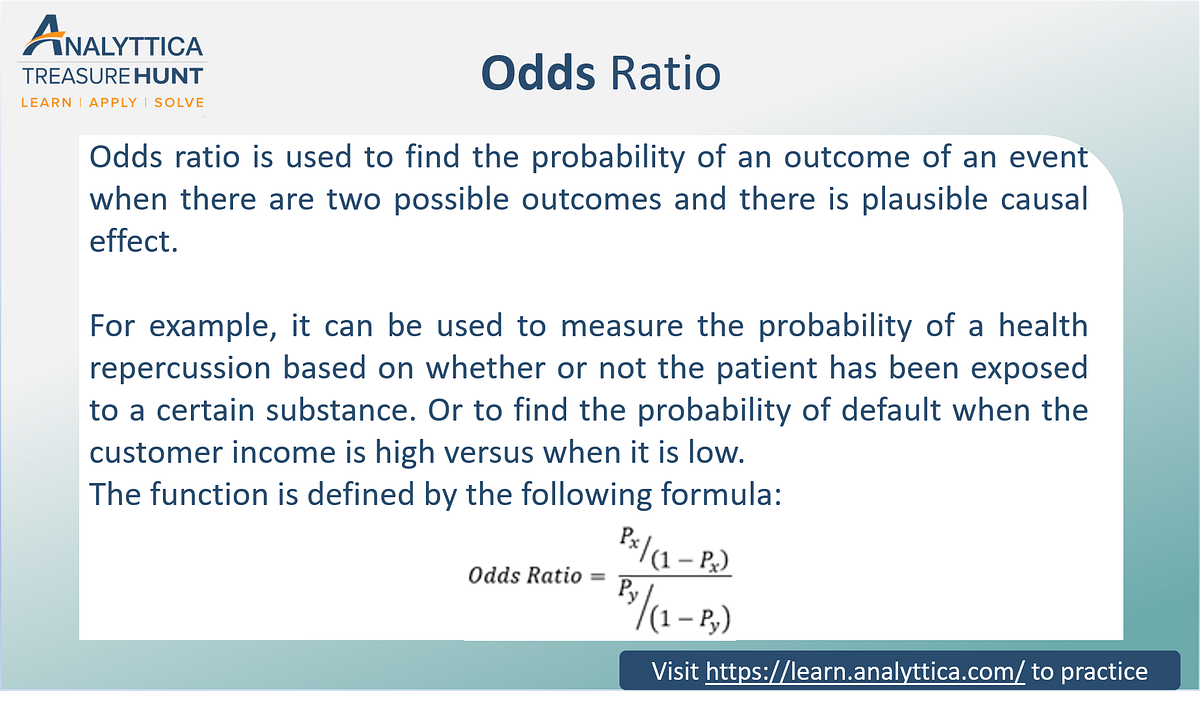


Odds Ratio The Odds Ratio Is Used To Find The By Analyttica Datalab Medium
Relative Risk, Odds, and Fisher's exact test Now we can't calculate the Relative Risk of dying from lung cancer if you're a smoker vs a nonsmoker But the Odds ratio still works, and we can easily calculate it 9,333 x 5,003 = 14 (I used the same proportions as above, just made the 4,997 x 667 samples bigger)The odds ratio for lettuce was calculated to be 112 How would you interpret the odds ratio?The odds ratio ((a/c)/(b/d)) looks at the likelihood of an outcome in relation to a characteristic factor In epidemiological terms, the odds ratio is used as a point estimate of the relative risk in retrospective studies Odds ratio is the key statistic for most casecontrol studies



Forest Plot Of Estimated Odds Ratio Or 95 Confidence Intervals For Download Scientific Diagram



Risk Factors For Early Onset Ischemic Stroke A Case Control Study Journal Of The American Heart Association
Odds ratio is similar to relative risk In the sheepskin trial the relative risk was 058 and the odds ratio was 054 For most clinical trials where the event rate is low, that is less than 10% of all participants have an event, the odds ratio and relative risk can be considered interchangeableEnglish Plot showing the relationship between risk ratio and odds ratio for various baseline risks with y=x in blue for comparison Date 21 February 21 Source Own work Author D Wells SVG development The source code of this SVG is This plot was created with R RsplusAn odds ratio of 112 means the odds of having eaten lettuce were 11 times higher among casepatients than controls Because the odds ratio is greater than 10, lettuce might be a risk factor for illness after the luncheon The magnitude of the odds ratio



Effect Sizes Basicmedical Key



Ppt Tests For Binary Categorical Outcomes Powerpoint Presentation Free Download Id
About Press Copyright Contact us Creators Advertise Developers Terms Privacy Policy & Safety How YouTube works Test new features Press Copyright Contact us CreatorsAug 17, 18 · Before we look at odds and risk ratios, let's be clear on what odds and probabilities are (this couple of paragraphs added on August 18) A probability will be a familiar concept to readers of this blog Let's say that one quarter of tigers are diseased If we pick a tiger at random, there is a 1/4 (or 025) probability that we pick aSo, keep in mind that whenever we talk about the hazard ratio, relative risk, and odds ratio, there will always be a comparison to be made These values are dependent on another value for context Photo by Tingey Injury Law Firm on Relative risks all have a baseline of 1



Using Odds Ratio In Case Control Studies Youtube



What Is An Odds Ratio And How Do I Interpret It Critical Appraisal



Relative Risk Versus Odds Ratio Usmle Biostatistics 4 Youtube



8a4bpwtxmyua2m



Padb Published Association Database Bmc Bioinformatics Full Text



Pubh 3131 Lecture Notes Spring 18 Lecture 7 Odds Ratio Attributable Risk Protective Factor
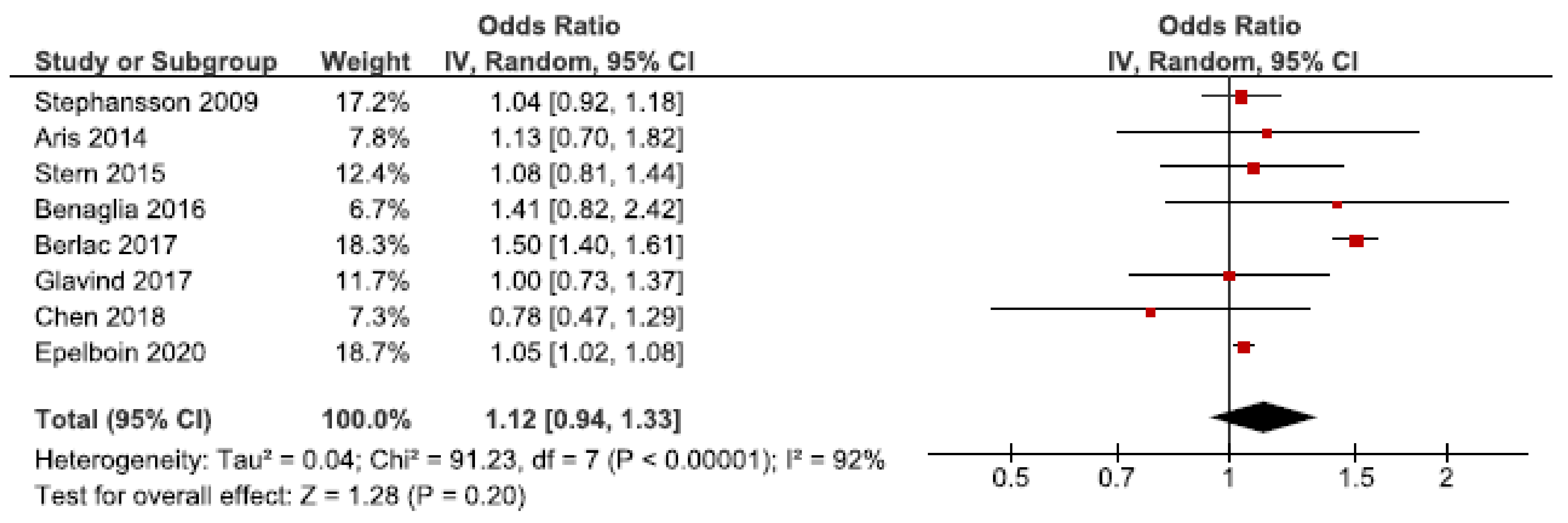


Jcm Free Full Text Endometriosis And Risk Of Adverse Pregnancy Outcome A Systematic Review And Meta Analysis Html



Cureus What S The Risk Differentiating Risk Ratios Odds Ratios And Hazard Ratios
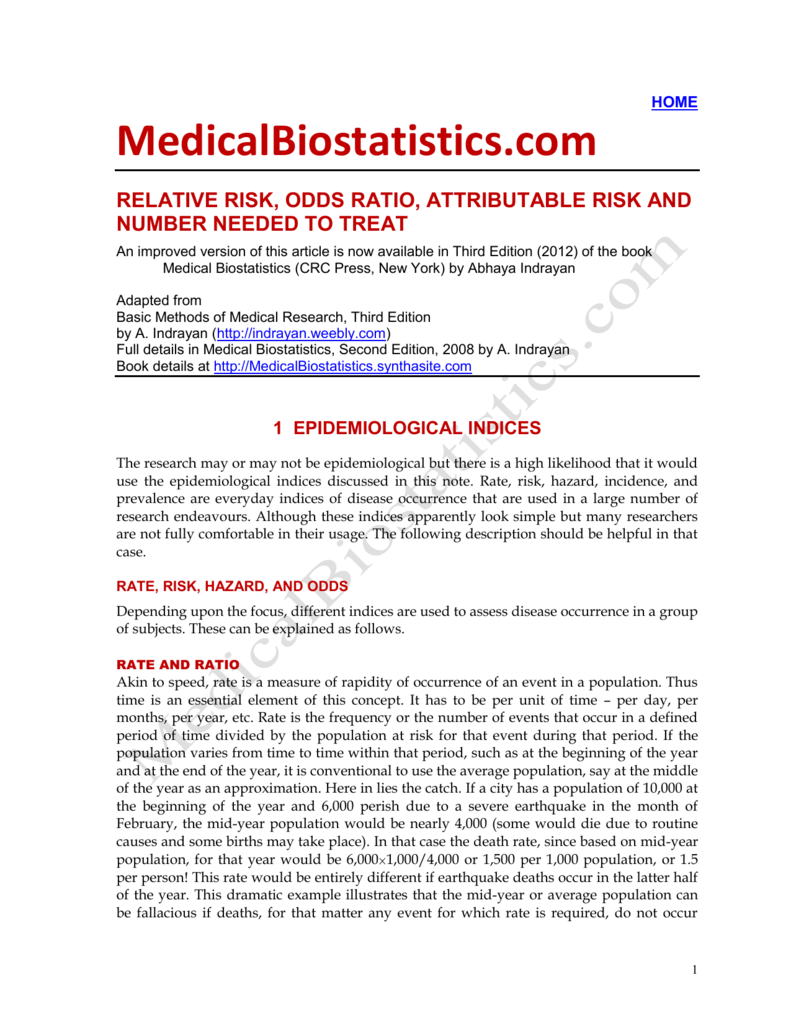


Relative Risk Odds Ratio Attributable Risk And



Bioepi Lesson 7 Measures Of Association Odds Ratio Relative Risk
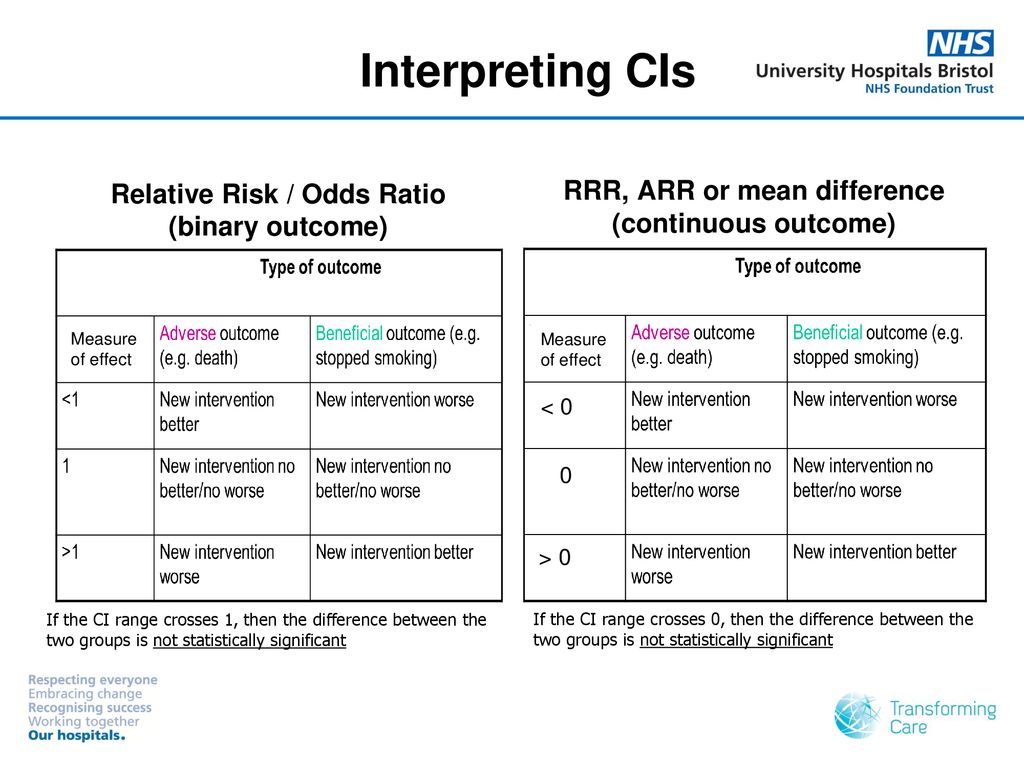


Interpreting Basic Statistics Ppt Download



File Risk Ratio Vs Odds Ratio Svg Wikimedia Commons
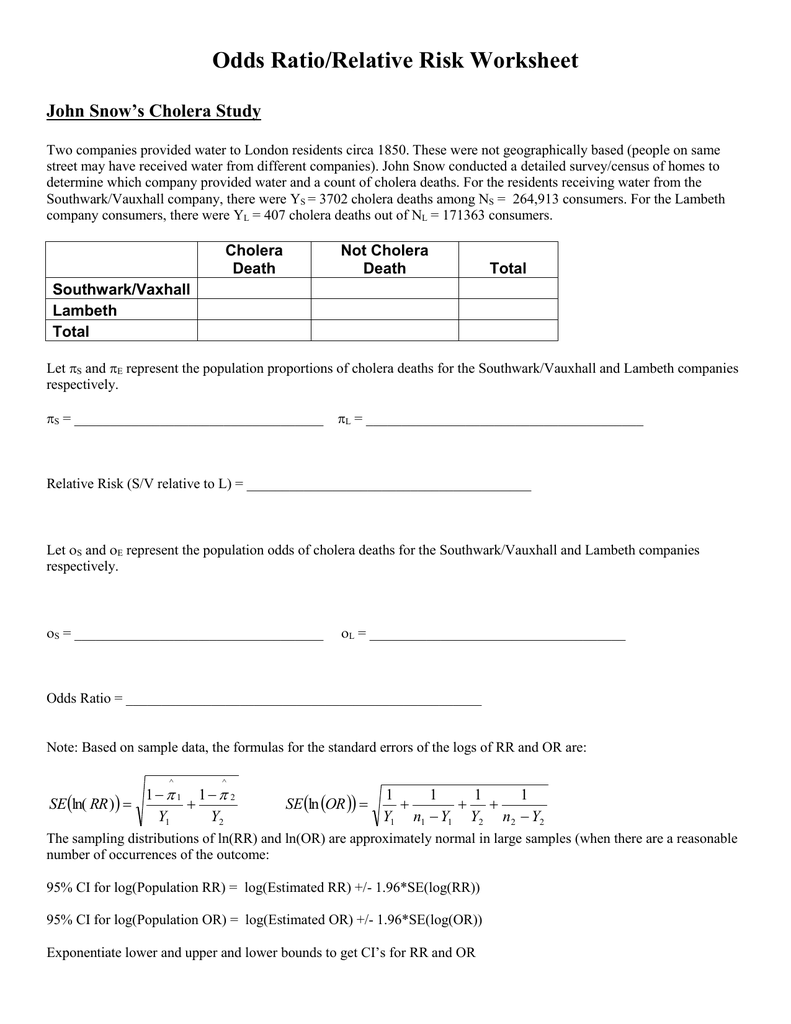


Odds Ratios And Relative Risks John Snow Cholera Data
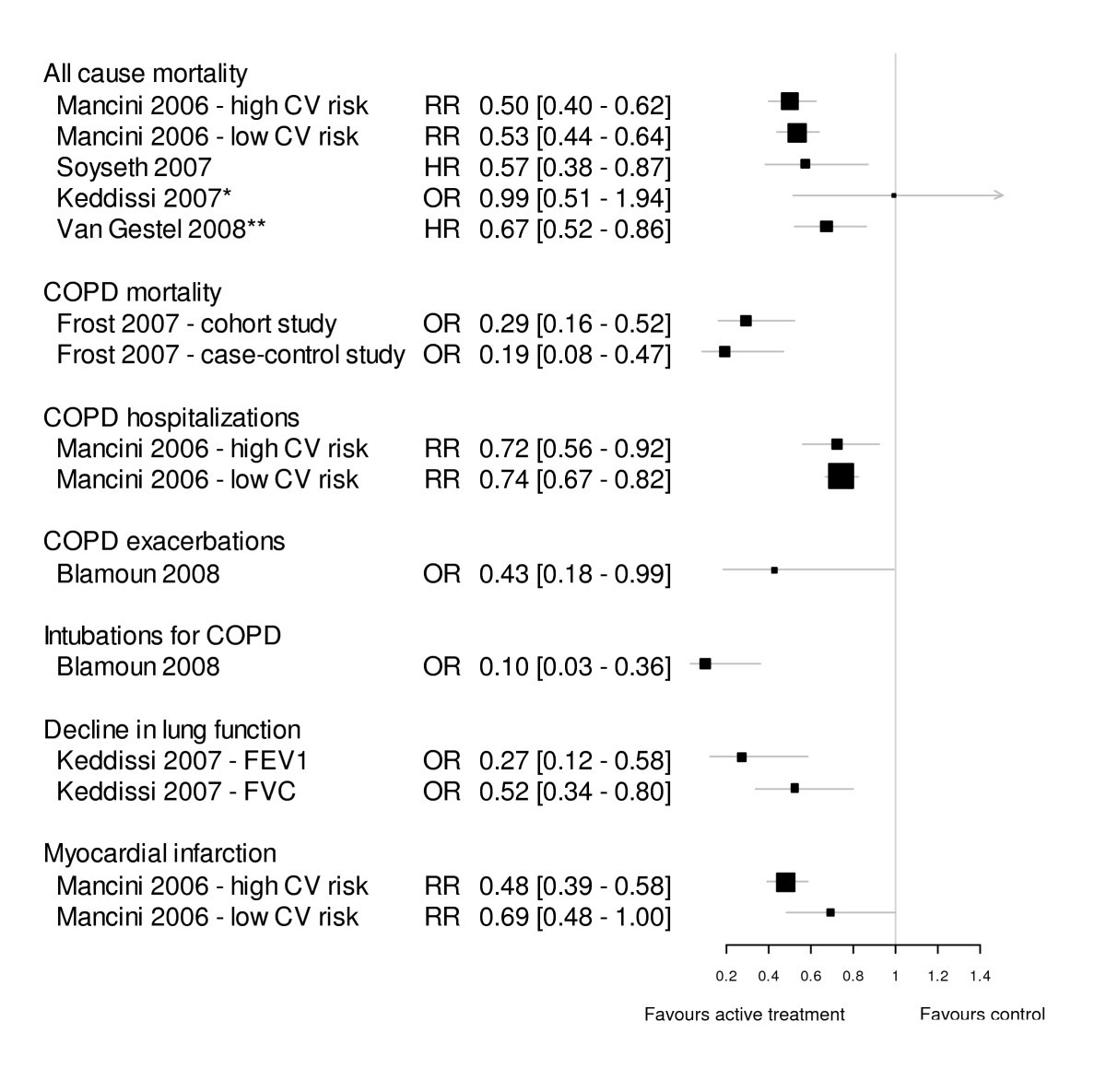


Associations Between Statins And Copd A Systematic Review Bmc Pulmonary Medicine Full Text



View Image


Studying Studies Part I Relative Risk Vs Absolute Risk Peter Attia



Converting An Odds Ratio To A Range Of Plausible Relative Risks For Better Communication Of Research Findings The Bmj



Relative Risk Wikipedia


The Effect Of Misclassification Error On Risk Estimation In Case Control Studies



Against All Odds How To Visualise Odds Ratios To Non Expert Audiences Henry Lau
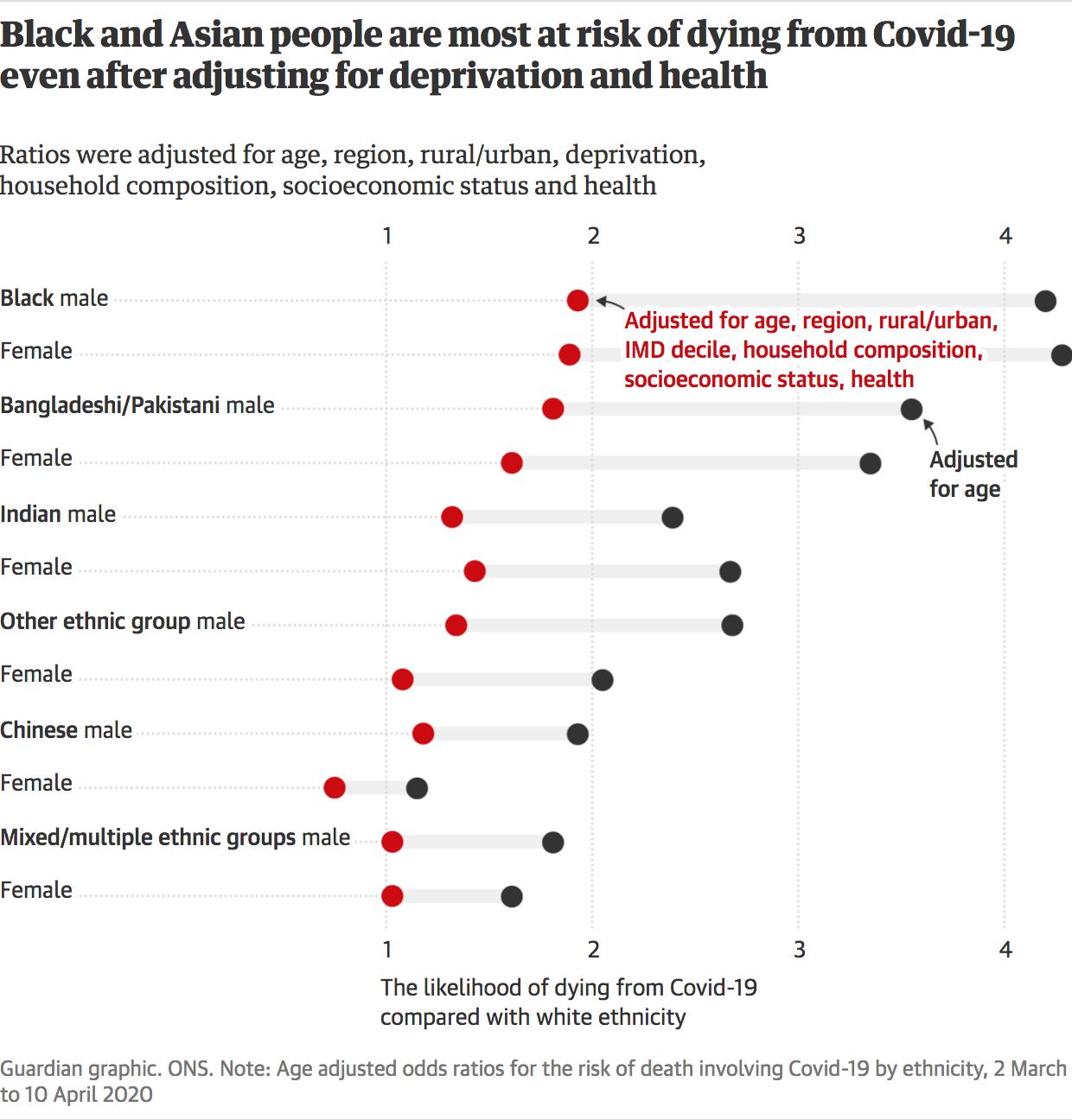


Against All Odds How To Visualise Odds Ratios To Non Expert Audiences Henry Lau



Nnt Review Odds Ratios Of Mortality Risk Factors



Odds Ratio Osmosis



Cureus What S The Risk Differentiating Risk Ratios Odds Ratios And Hazard Ratios


The Effect Of Misclassification Error On Risk Estimation In Case Control Studies



How To Calculate An Odds Ratio Youtube
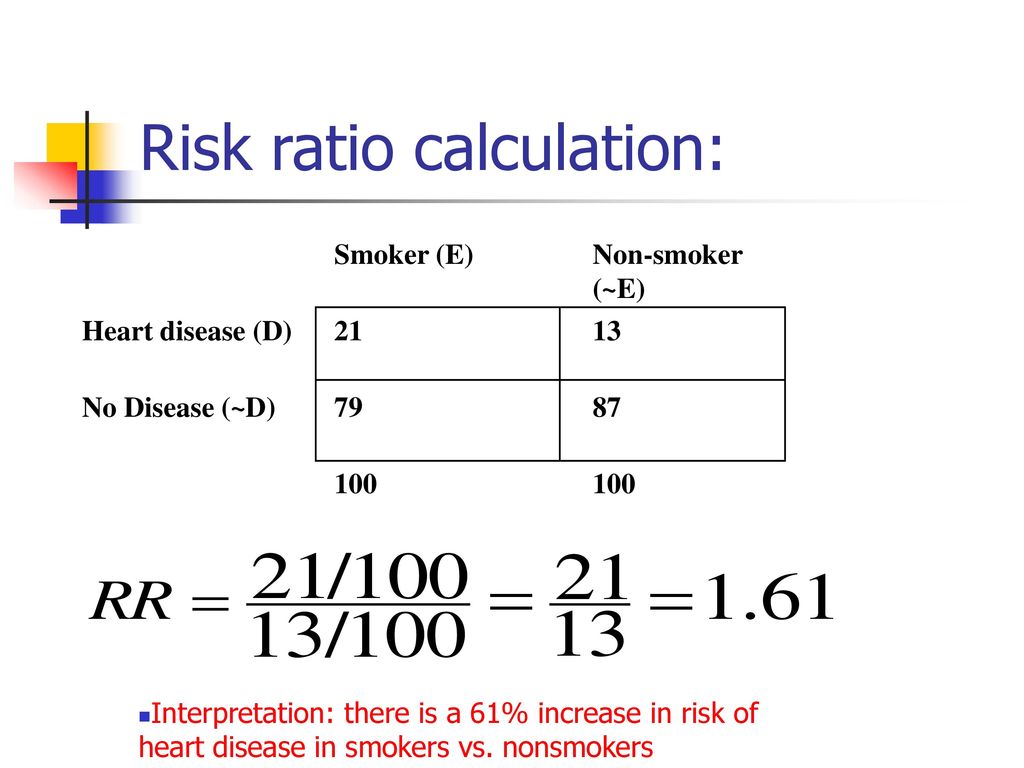


The Binomial Applied Absolute And Relative Risks Chi Square Ppt Download
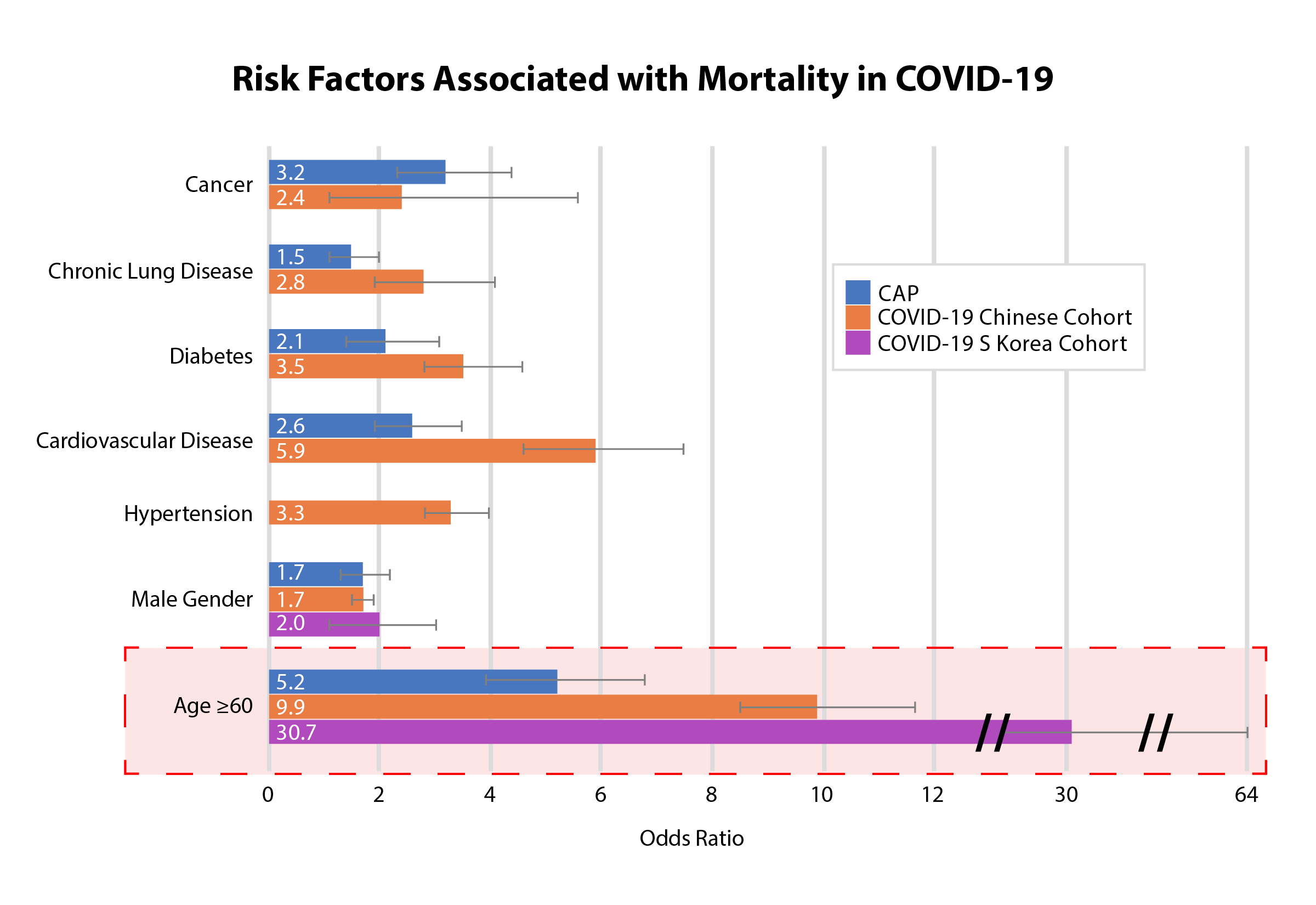


Nnt Review Odds Ratios Of Mortality Risk Factors
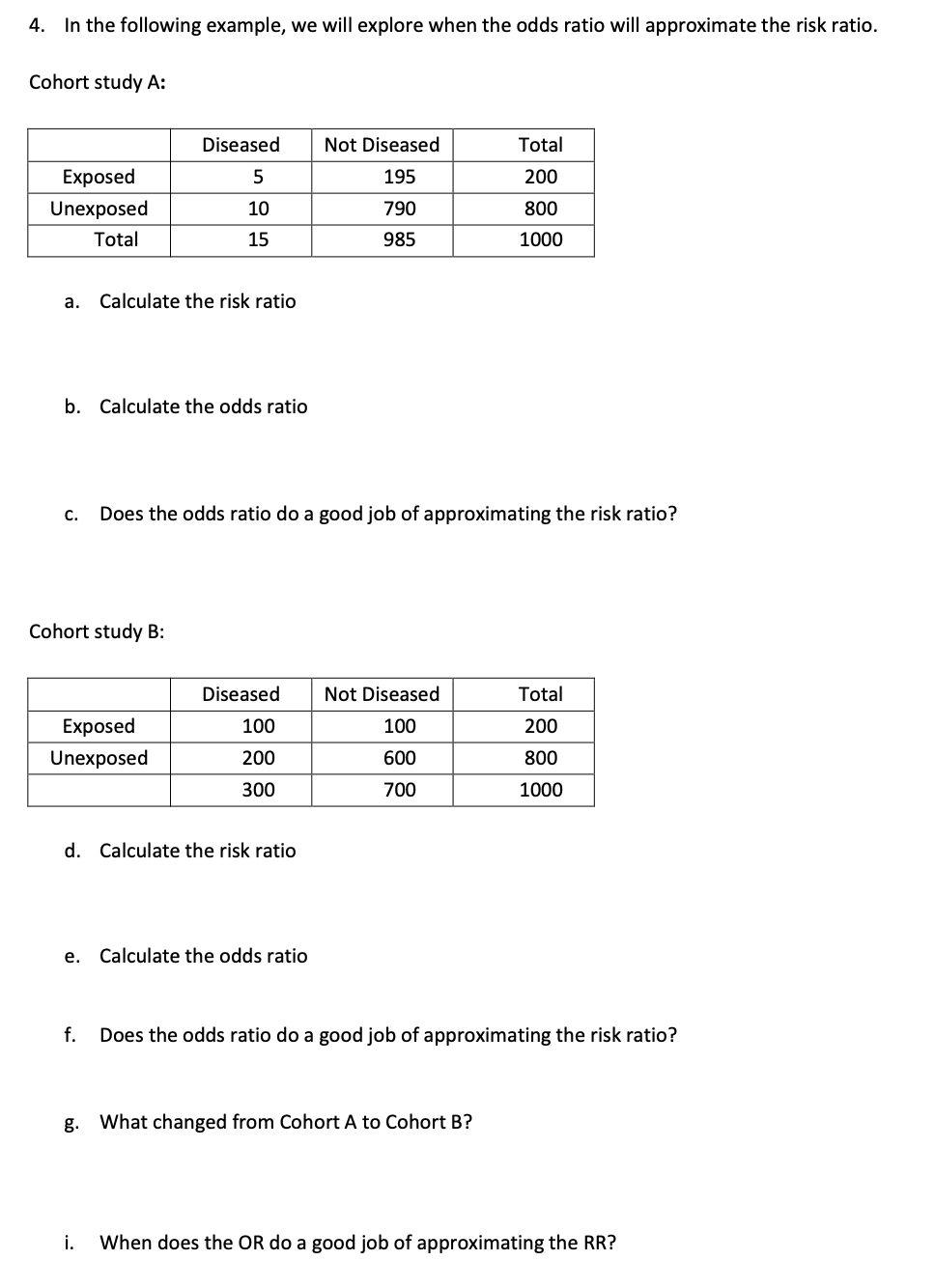


Solved Explore When The Odds Ratio Will Approximate The R Chegg Com



Retrospective Cohort Study Wikipedia



Medi251 Lecture Notes Spring 17 Lecture 9 Attributable Risk Cumulative Incidence Odds Ratio



Relative Risk Odds Ratios Youtube



Technical Note The Risk Ratio An Alternative To The Odds Ratio For Estimating The Association Between Multiple Risk Factors And A Dichotomous Outcome Semantic Scholar
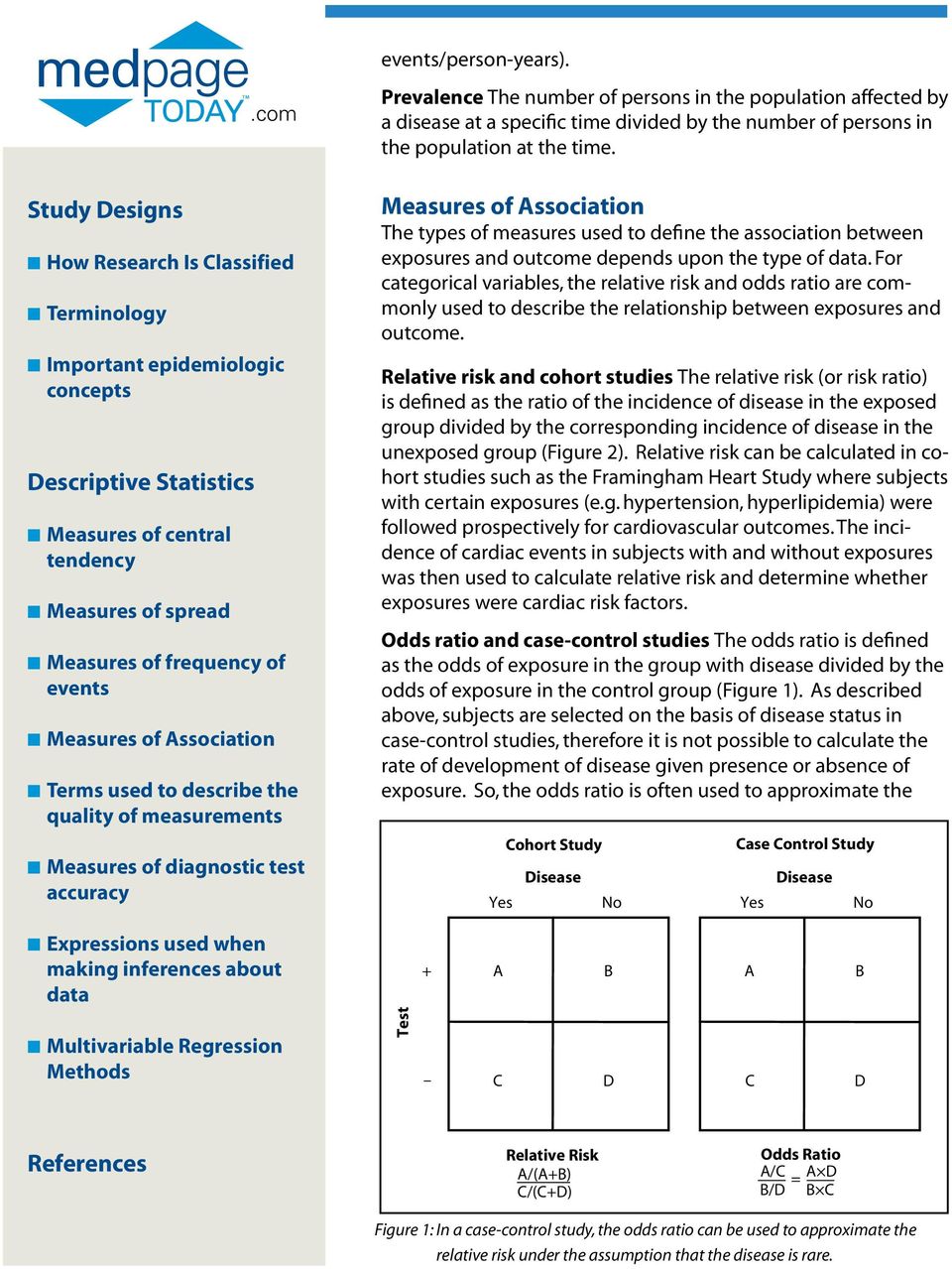


Guide To Biostatistics Pdf Free Download
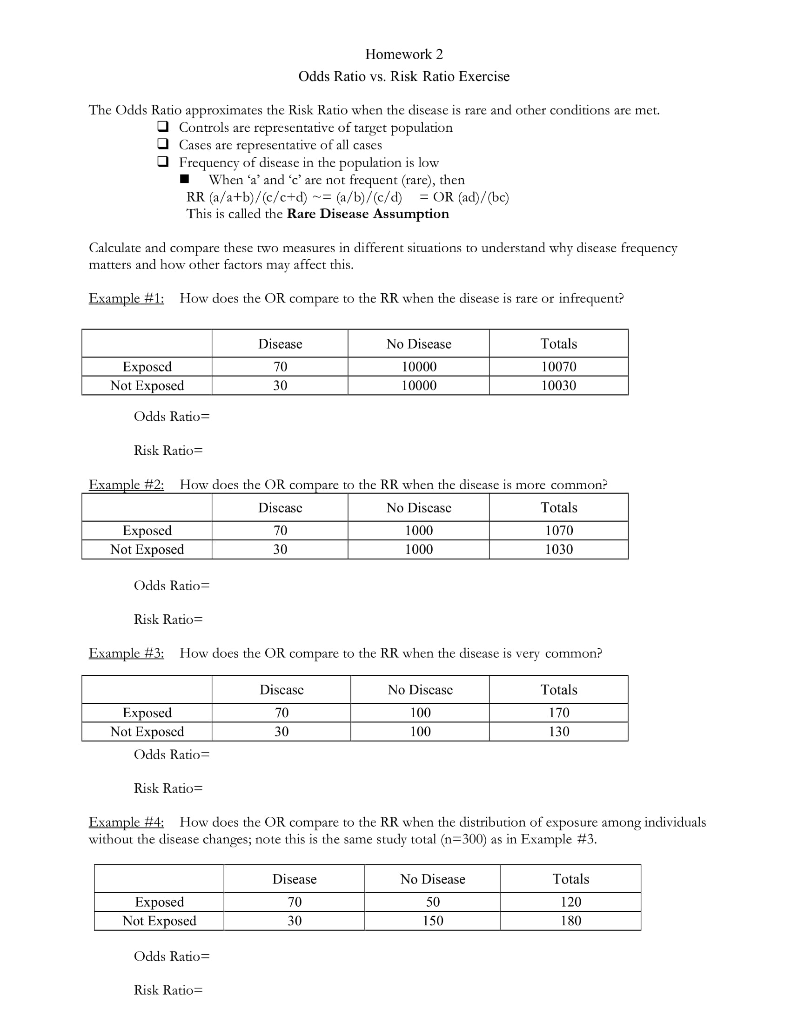


Solved Homework 2 Odds Ratio Vs Risk Ratio Exercise The Chegg Com



Tutorial About Hazard Ratios Students 4 Best Evidence


Plos One Impact Of Risk Factors On Different Interval Cancer Subtypes In A Population Based Breast Cancer Screening Programme
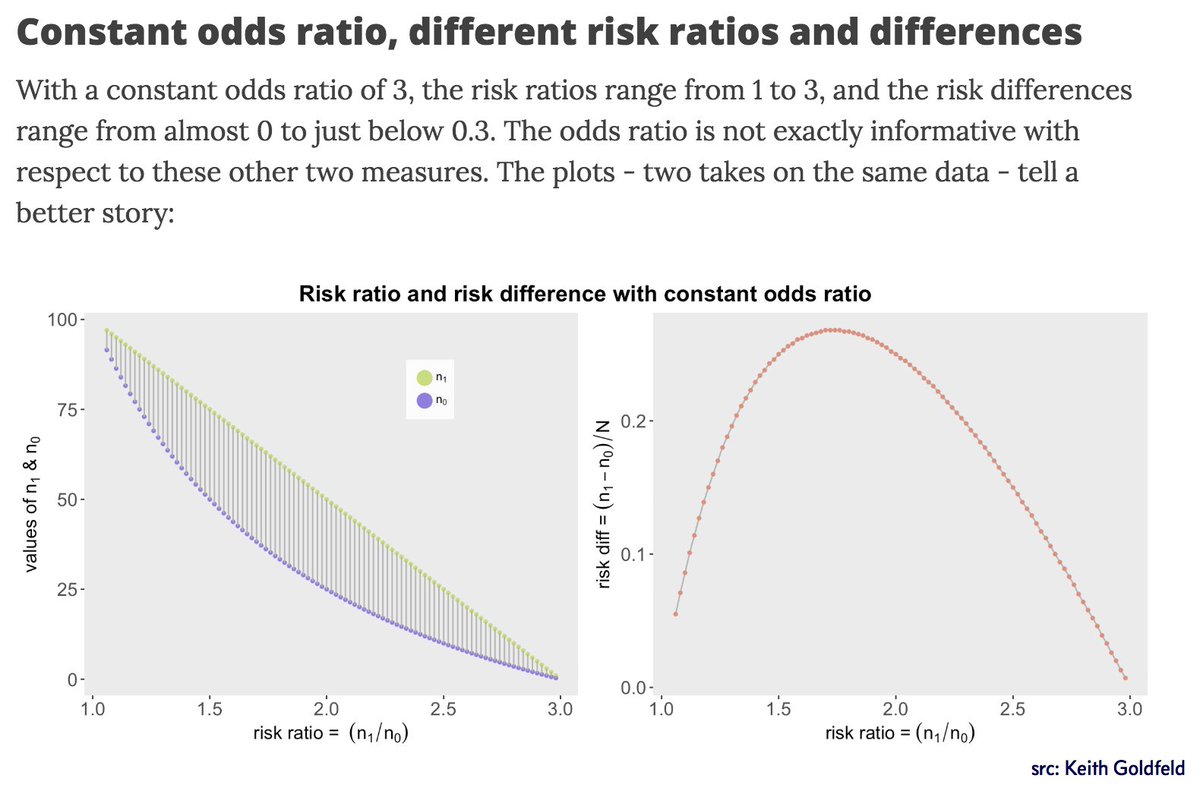


Mara Averick En Twitter As Someone Who Asks For Odds Ratios And Relative Risk At The Vet I This Post How The Odds Ratio Confounds A Brief Study In A



Understanding Systematic Reviews And Meta Analysis Archives Of Disease In Childhood



Lecture 08 Strategies For Data Analysis Cohort And Case Control Studies Ppt Relative Risk Cohort Study



Assessment Of Multiplicative Interaction Using Risk Ratios And Odds Ratios Download Scientific Diagram



Risk Ratio Vs Odds Ratio Page 1 Line 17qq Com
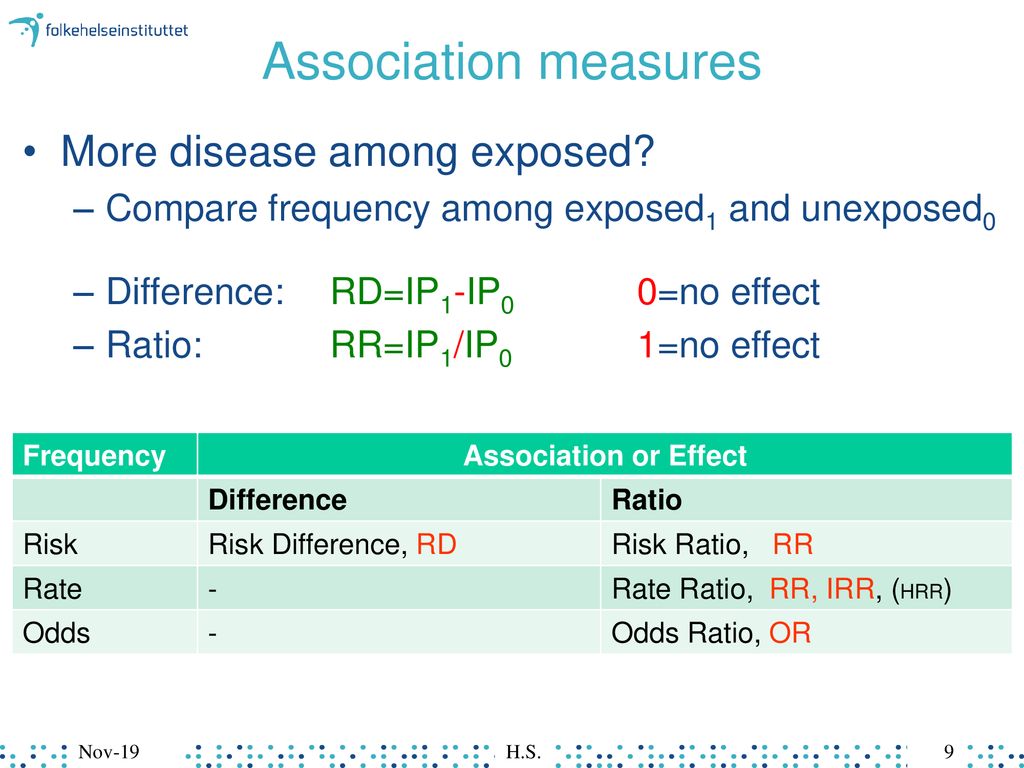


Summary Of Measures And Design Ppt Download



Figure 1 From Interpretation Of Odds And Risk Ratios Semantic Scholar



Estimated Relative Risk Rr Compared With Odds Ratio Or For All Download Scientific Diagram


Plos Medicine Appraising The Role Of Previously Reported Risk Factors In Epithelial Ovarian Cancer Risk A Mendelian Randomization Analysis



Table 2 From Interpretation Of Odds And Risk Ratios Semantic Scholar


How To Read A Forest Plot Cochrane Uk



When Can Odds Ratios Mislead The Bmj



Odds Risk Ratio For Obesity Among Disease Free Adults Employed In High Download Table



Applied Biostatistics Lecture Notes Mathematics Docsity



Forest Plots Of The A Odds Ratio Or B Risk Ratio Rr And C Download Scientific Diagram



Solved Exposure Use Of Bipolar Disorder Yes Yes 153 No 3 Chegg Com



Ppt Measures Of Association Powerpoint Presentation Free Download Id



View Image



Assessing Heterogeneity Of Treatment Effect Estimating Patient Specific Efficacy And Studying Variation In Odds Ratios Risk Ratios And Risk Differences Statistical Thinking



Association Of The Quick Sequential Sepsis Related Organ Failure Assessment Qsofa Score With Excess Hospital Mortality In Adults With Suspected Infection In Low And Middle Income Countries Abstract Europe Pmc



0 件のコメント:
コメントを投稿